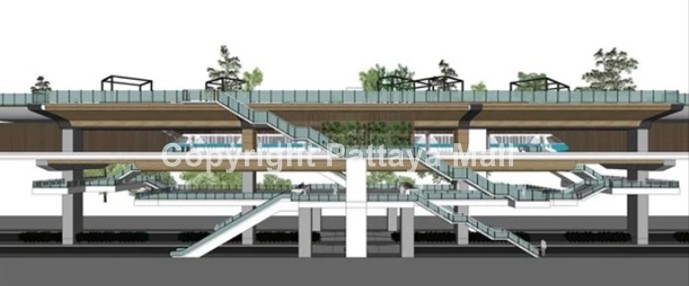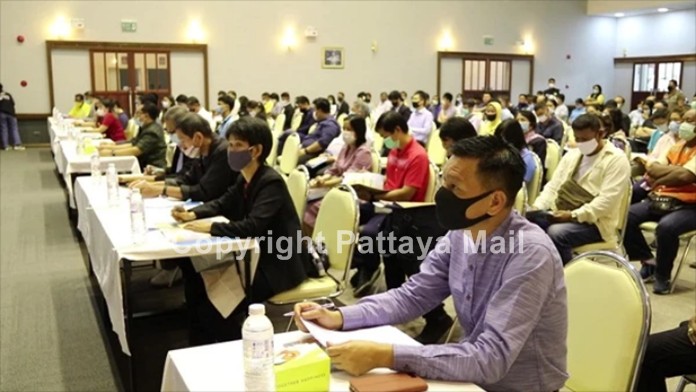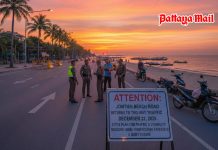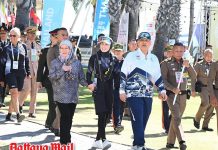
Over 80 percent of Pattaya residents support a monorail project approved last week and set to begin construction in 2024, city officials said.
Pongtavee Lertpanyawith, head of the consulting team putting together the project’s feasibility and environmental-impact reports, said local response during the first two public hearings was overwhelmingly positive. However, there were concerns about adverse traffic effects during construction.

Speaking at an Aug. 20 presentation at the Redemptorist Convention Center, Pattaya, Pongtavee said people were concerned that Second Road already is narrow and building the pillars to support the elevated rail tracks will cause massive congestion.
The monorail sits 18 meters above street level with tracks supported by steel-reinforced concrete pillars 1.8 meters wide, allowing for minimal land expropriation and offering the most-affordable cost of three options considered.
Planners envision three train lines – Green, Purple and Red – that would by 2036 connect East Pattaya, downtown and Jomtien Beach.
The Green Line would run a nine-kilometer route from the Pattaya train station, along Highway 7 to North Road and on to Second Road, then turn off Thappraya Road and terminate at Bali Hai Pier. The initial cost estimates for this line alone are 21 billion baht, including parking structures, a 40-rai station and shopping mall.

The Purple Line would be built between 2027 and 2031 and would run from Nongprue Subdistrict to a Green Line station at the intersection of Pattaya’s South and Second roads.
The Red Line, serving Jomtien Beach, would be built from 2032-36, running from the Eastern National Indoor National Sports Stadium on Soi Chaiyapruek 2 along Jomtien Second Road to Pattaya Second Road and terminating at the Dolphin roundabout.
Deputy City Manager Kiattisuk Sriwongchai, who chaired the meeting, said inefficient public transport and traffic have been two factors inhibiting proper development of the city. The monorail will go a long way toward solving that, he said.


 |
 |
 |





